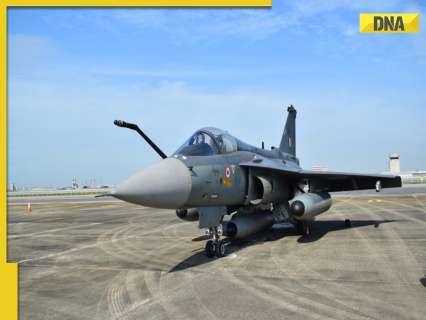Now Reading: Bad news for Pakistan, China as India eyes defence partnership with France for Tejas Mark 2 fighter jets, French company Safran will now develop…
-
01
Bad news for Pakistan, China as India eyes defence partnership with France for Tejas Mark 2 fighter jets, French company Safran will now develop…
Bad news for Pakistan, China as India eyes defence partnership with France for Tejas Mark 2 fighter jets, French company Safran will now develop…

This move comes after delays from the United States in delivering engines for India’s advanced fighter aircraft programmes.
India is exploring a new partnership with French aerospace company Safran to develop powerful engines for its future fighter jets. This move comes after delays from the United States in delivering engines for India’s advanced fighter aircraft programmes. According to reports, the Indian government is focusing on powering two key fighter jets — the Tejas Mark 2 and the upcoming fifth-generation stealth aircraft, known as AMCA (Advanced Medium Combat Aircraft). Officials say Safran has submitted formal proposals to India’s Gas Turbine Research Establishment (GTRE) and Hindustan Aeronautics Limited (HAL) for joint engine development.
At present, the Tejas Mark 2 is supposed to use the American GE F414 engine, which provides 98 kilonewtons (kN) of thrust. Under a deal with GE, 80% of the engine is to be built in India. However, delays in delivery and rising costs have slowed down the programme, making India look for other options.
Safran has now offered a 110 kN thrust engine for the Tejas Mark 2, which could improve the jet’s speed, endurance, and ability to carry heavier weapons.
The Tejas Mk-2, developed by the Aeronautical Development Agency (ADA) and HAL, is planned to replace older aircraft like the Jaguar, Mirage-2000, and MiG-29 in the Indian Air Force. The aircraft will feature advanced radar, an infrared tracking system, and Indian-made weapons like the Astra missile and the BrahMos-NG.
For the AMCA stealth fighter, Safran has also proposed a powerful 120 kN engine. This engine will be key to the twin-engine aircraft’s high performance and stealth capabilities. Defence Minister Rajnath Singh said India plans to build five AMCA prototypes by 2029.
Safran already works with HAL on helicopter engine projects. If this new deal is finalised, it could be a major step forward in India’s efforts to build its own fighter jet engines. The agreement may also include technology transfer, which would help India become more self-reliant in defence production.























